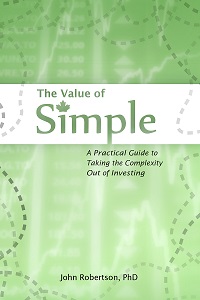Sino-Forest: Day 3
June 6th, 2011 by PotatoOn Friday, I was pretty upset with Sino-Forest: their release was somewhat weak, engaging in ad hominem attacks rather than reassuring me. They had two good points, but if the sale of standing timber was a fictional trade to a related party, it didn’t much matter whether it was standing timber or cut. Most importantly to my mind, was that they were late. They promised investors to have a release before market open (i.e., 9am or earlier), and didn’t get it out until 10:30. I am very understanding of lateness in preparing documents, particularly long ones that tell the tale of your research program for the previous 5 years (ah-hem), but this was a two-page press release with not that much substance. I have to admit that my expectations were raised a bit by the lateness: perhaps they were waiting for the bank to open so they could drag an auditor down there to prove the cash was still in place?
Anyhow, as you read in the last post, I sold until I could get a better handle on what the truth of the matter was.
On the one hand, back-of-the-envelope calculations about harvesting a certain number of trees in a single year being impossible have been the kind of thing Muddy Waters has excelled at in previous cases. If that was what lead them down the rabbit hole in the first place, then the clarification that it was a standing timber sale helps. Honestly, I can’t sort through the almost entirely Chinese documents alleging that the transactions were with related entities and/or shams. That doesn’t give me much confidence in Sino-Forest, but also makes me wonder how strong MW’s case is then.
However, it makes me think that if there is a case that MW is going to get wrong, it’s this one. Many people are calling for proof of ownership of the trees to disprove the allegations. That would indeed be strong proof, and it was frightening that the BMO analyst said it was asked for previously and not provided. I’m willing to grant to the company that there may be a good reason for that. How do you prove ownership of hundreds of thousands of hecatres? Start pulling out all the deeds? A hundred separate Chinese-language contracts to plow through? That would be the best evidence, but it would likely take too long.
I really just want to see the cash.
Frauds exist to siphon shareholder money out of the suckers’ hands and into those in on the deal. It’s possible to do this with money in the company accounts, and just engage in some back-and-forth phantom transactions with related parties to inflate the share value, then sell your shares, but that’s a lot of work compared to just taking money that’s in the bank. Proving the money is there wouldn’t be strong proof that the company is real, but it would be quick, and I think it would be enough for me to buy back in (and risk losing more).
The company put out a release this morning (before market open this time):
Cash on hand
As at December 31, 2010, the Company had approximately US$1.26 billion in cash, cash equivalents and short term deposits as reported in the audited consolidated balance sheet. As at March 31, 2011, the comparable amount was US$1.09 billion. The sources and uses of cash for the period ending March 31, 2011 will be further detailed in our quarterly report for the period ending March 31, 2011 expected to be issued on June 14, 2011.Sino-Forest has released today on its website a summary schedule of cash and cash equivalent and short term deposits along with a detailed listing with copies of its bank statements confirming the cash held within the Company as at that date. The Company has conducted business in the ordinary course since then and made ordinary course expenditures, and its cash remains intact with the majority of it in banks in Hong Kong.
Ok, here we go, that’s a little better. Now, we learned in previous RTOs that it’s not enough to just look at the company’s copy of the bank statements: you need someone to go down to the bank and verify that the money is indeed in the accounts as indicated. Unfortunately, the documents are behind a registration wall on their website, and you have to email to get a login, which may take up to 12 hours to receive.
Seriously? These guys are just shooting themselves in the foot with that one.
Updates:
TD has finally updated its report.
While many allegations in the Muddy Waters report demonstrate a fundamental misunderstanding of Sino-Forest’s business model, others are material and are impossible for us to refute or verify at this time. We appreciate the time constraints involved, but we hoped for a more comprehensive response from management on Friday.
That’s well said, IMHO. I still don’t think I have the information I need to make an informed speculation here and buy back in, as much as I want to believe the company. Today’s release was better, but saying the bank statements are on the website, locked up behind a registration wall I’m still on the wrong side of at the moment, doesn’t bring me any joy. Any Hong Kong bank executives amongst our readership, by chance? Is the money there?
Oh, and I meant to mention insider trading on Friday but didn’t get around to it. There was a lot of insider selling in TRE back around December 2010. That was somewhat worrisome, but I brushed it off when buying, in part because the selling was at a much higher price. The VP finance exercised some options and immediately sold the shares (he apparently doesn’t believe in owning the company he works for). The CFO exercised options and sold twice as many shares (cutting his ownership way down). The CEO sold a large dollar-amount of shares, but only about 11% of his holdings.
From the Bronte Capital client letter (John Hempton is much better at identifying frauds than MW):
Chinese frauds are the richest vein of non-market correlated profit Bronte has ever discovered. When we started, John could read the accounts of a reverse-takeover stock and within twenty minutes determine it was a fraud. Complex analysis was not necessary. We got short dozens of different companies and almost everything we touched we made money on. […] In some cases we found fraud in under five minutes. We simply could not understand why anyone held these stocks – but alas major mutual fund groups and sometimes even sophisticated hedge funds held the stocks. We made good money on stocks we shorted after five minutes analysis (determining that there was fraud) and by the time the stocks collapsed 80 plus percent we had forgotten what it was that made us convinced it was fraudulent. We just had the stocks marked as frauds, shorted them and forgot about them. […]
Alas the major frauds taking five minutes to detect are gone. Almost all of those stocks have collapsed. There are one or two small positions remaining – but the gig is up.
There are still plenty of frauds in China – however it is no longer like fishing with dynamite. Precise analysis is required to pick the right stocks to short. Longtop took an intense week of work. The ones we are doing now will require two weeks. We will do the analysis – and many of the weeks will be wasted because we will work and not be able to prove fraud.
It is likely we will actually buy some of the companies we can’t find fraud in. After all people are shorting without doing our level of analysis – and those people will buy back on similarly thin analysis. Some the stocks could be a wild ride both for the shorts and for the longs.
That suggests to me there will be no easy answers with Sino-Forest.
Oh, and the stock opened at ~$8 this morning, so I do look quite the fool for bailing on Friday. Ah well, I had to work with the information I had.
Update 2: I just got my login for the Sino-Forest web page data dump. Lots of realistic-looking scanned-in bank statements. But if this is a convincing piece of performance art, the statements are not that hard to fake. How do we know that there’s actual cash in a bank somewhere to back it up? Still, better. Though this should have been out on Friday. I want to be fairly certain down in my gut if I buy back in that I’m right and the shorts are wrong, and then go in with authority (because it’s an opportunity, not to try to chase losses). But I’m not there yet, so no position at this point.
Update 3: An interesting article in the Globe about the other reasons some people were short, prior to the MW report. Some of these were concerns I had thought of before buying, some didn’t really even cross my mind.


 Questrade: use QPass 356624159378948
Questrade: use QPass 356624159378948 Passiv is a tool that can connect to your Questrade account and make it easier to track and rebalance your portfolio, including the ability to make one-click trades.
Passiv is a tool that can connect to your Questrade account and make it easier to track and rebalance your portfolio, including the ability to make one-click trades.